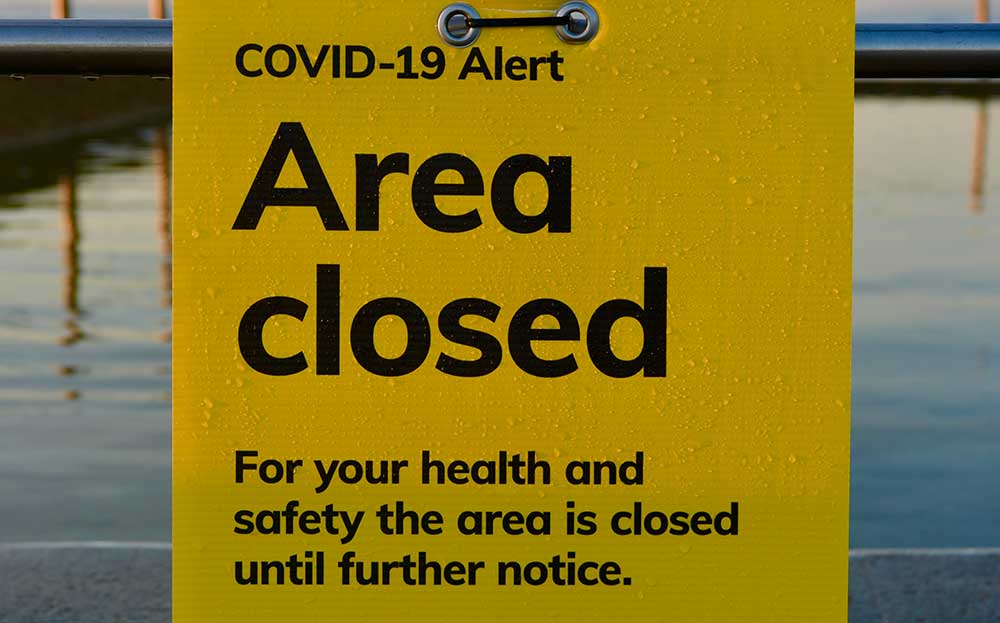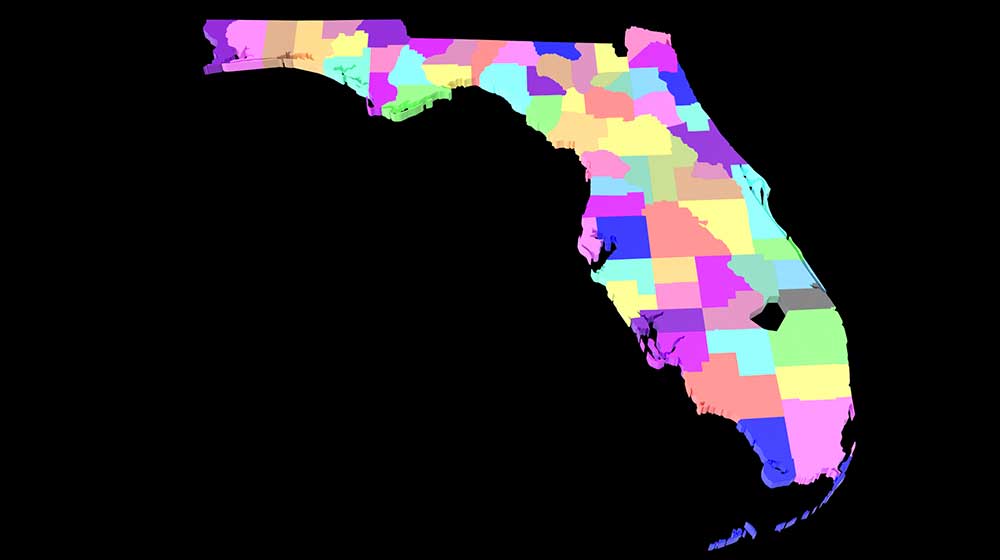The most asked question of 2020 is this: Can our association host our board and annual meetings using Zoom or another similar virtual/electronic platform? There is no doubt that technology will always advance faster than legislation. In fact, advances in technology seem to take place in light speed where as advances in legislation seem to travel at the speed of your average turtle.
As to board meetings, §718.112(2)(b)5 of the Condominium Act provides, “A board or committee member’s participation in a meeting via telephone, real-time videoconferencing, or similar real-time electronic or video communication counts toward a quorum, and such member may vote as if physically present. A speaker must be used so that the conversation of such members may be heard by the board or committee members attending in person as well as by any unit owners present at a meeting.” Note that similar provisions are provided for cooperative associations in §719.106(1)(b)5 and in §617.0820 for homeowners’ associations.
As to virtual membership meetings, Chapter 617 Florida Statutes, applicable to all of Florida’s not-for-profit community associations, provides in §617.0721(3) that if authorized by the board of directors, and subject to such guidelines and procedures as the board of directors may adopt, members and proxy holders who are not physically present at a meeting may, by means of remote communication participate in the meeting and be deemed to be present in person and vote at the meeting if the corporation implements reasonable means to verify that each person deemed present and authorized to vote by means of remote communication is a member or proxy holder; and the corporation implements reasonable measures to provide such members or proxy holders with a reasonable opportunity to participate in the meeting and to vote on matters submitted to the members, including an opportunity to communicate and to read or hear the proceedings of the meeting substantially concurrent with the proceedings. If any member or proxy holder votes or takes other action by means of remote communication, a record of that member’s participation in the meeting must be maintained by the corporation in accordance with §617.1601. [emphasis added]
In addition, the Condominium, Homeowners Association, and Cooperative Acts (Chapters 718, 720, and 719, Florida Statutes, respectively), provide that members have a right to speak during board and membership meetings (more on that below). In fact, each of the Acts also provide that board members can even communicate, but not make decisions, via email. Rule 61B23.001(2) of the Florida Administrative Code provides, in relevant part, that “all unit owners have the right to attend and observe all meetings of the board…” With this limited guidance as our backdrop, let’s ask the question slightly differently.
Can our association host our board and annual meetings via Zoom or another electronic platform so long as all members have their opportunity to speak at the relevant times and all other statutory requirements are followed, such as a speakerphone in the designated meeting location for condominium association board meetings? The answer, simply put, is “yes,” you can.
It is extremely important when planning on hosting the meeting through a Zoom-type platform that you think ahead about the implications. The type of vote that will occur at any membership meeting must be carefully considered. For example, what if there is an election and members have not yet opted to vote electronically? Provisions must be made to gather ballots up to the closing of the balloting at the membership meeting and for write-in candidates, too, as applicable (in a homeowners association type setting). Instructions must also be clearly provided to the members letting them know how the votes will be counted and ensuring the membership that they can observe the entire tabulation of the voting process. For example;
Dear Members, In accordance with s. 720.316, Florida Statutes, in order to protect the health, safety, and welfare of the Association’s members, except for the members who volunteer to assist with the tally of the ballots (along with the management team and the Association’s legal counsel), there will be NO in-person attendance at the annual meeting. Although there will be no in-person attendance, the annual meeting will be broadcast through Zoom (online video conferencing) for those who wish to remotely attend and observe the annual meeting, including the tallying of ballots. You may join the Zoom meeting at the appointed time by using the following link in your web browser: ___________ or through the Zoom application on your smart phone or tablet with Meet- ing ID: __________ and entering the following Password: ___________.
Since we are on the subject of board and membership meetings and we are in “election season,” as it is affectionally referred to, let’s take a quick look at meeting notice requirements, eligibility, and terms for board of directors, vacancies, election disputes, and a members’ right to speak.
BOARD MEETING NOTICE REQUIREMENTS
Pursuant to §718.112(2)(c)1, 719.106(1)(c), and 720.303(2)(c), Florida Statutes, notice of a meeting of the board must be posted in a conspicuous place on the property at least 48 continuous hours preceding the meeting, unless the governing documents of the association require additional notice. However, notice of meetings of the board at which regular or special assessments against unit owners or at which amendment to the rules regarding unit use will be considered must be mailed, delivered, or electronically transmitted to the owners and posted conspicuously on the property not less than 14 days before the meeting. Remember, too, electronic transmission is only permitted if the owner provides prior written consent.
As discussed in more detail below, for annual meetings of the membership where an election will be held, the notice requirements for condominium and cooperative associations differ from the requirements for homeowners associations. However, for other meetings of the members, unless a homeowners association’s bylaws provide differently, the notice requirements are the same. Pursuant to §718.112(2)(d)3 and 719.106(1)(d), Florida Statutes, notice of a meeting of the membership must be given to each owner and posted in a conspicuous place on the property at least 14 days before the meeting. For homeowners associations, pursuant to 720.306(5), Florida Statutes, notice of meetings of the members must be given 14 days prior to the meeting, unless the bylaws provide differently. For meetings of the members where an election will be held, pursuant to §718.112(2)(d)4 and 719.106(1)(d)1, Florida Statutes, the first notice of the annual meeting of the membership must be sent to the members at least 60 days prior to the meeting, and the second notice must be provided at least 14 days to the members and posted conspicuously on the property at least 14 days in advance before the meeting. For homeowners associations’ annual meetings, notice must be provided at least 14 days before the meeting unless the bylaws provide differently pursuant to §720.306(5), Florida Statutes.
ELIGIBILITY AND TERMS FOR BOARD OF DIRECTORS
The eligibility requirements for board members are set out in §718.112(2)(d)2, 719.106(1)(a), and 720.306(9)(b). Pursuant to the foregoing, a person who is delinquent in the payment of any fine, fee, or other monetary obligation to the association is not eligible to be a candidate for the board. Additionally, any person who has been convicted of a felony is not eligible to serve on the board unless the person’s civil rights have been restored for at least five years. With the passage of Amendment 4, voting rights were restored to people convicted of a felony. It is unclear what impact Amendment 4 will have on the restrictions to eligibility for board members.
Additionally, condominium associations should be aware that §718.112(2)(d)2 was amended to provide that a board member may not serve more than eight consecutive years unless approved by two-thirds of all votes cast in an election or if there are not enough eligible candidates to fill vacancies on the board. However, this provision applies prospectively, which means the clock did not start until the law went into effect on July 1, 2018. Additionally, this only prohibits eight consecutive years of service. If a board member has a break in service, then the clock would begin again.
For condominium and cooperative associations with 10 or more units, co-owners of units are not eligible to serve on a condominium board unless they own more than one unit or unless there are not enough eligible candidates. This is not applicable to homeowners associations.
Governing documents may provide that you must be an owner to serve on the board, but generally they cannot establish other eligibility requirements, such as residency requirements.
VACANCIES
In the event of a vacancy on the board, pursuant to §718.112(2)(d)9, 719.106(1)(d)6, and 720.306(9)(c), unless the bylaws provide otherwise, the vacancy may be filled by the affirmative vote of a majority of the remaining directors, even if the remaining directors constitute less than a quorum, or if there is only one director remaining. In the event there is only one director remaining on the board, that director can choose to appoint people to fill all of the vacancies.
ELECTION DISPUTES
Election disputes for condominium, cooperative, and homeowners associations are handled by the Florida Department of Business and Professional Regulation, Division of Florida Condominiums, Timeshares, and Mobile Homes (the “DBPR”) through mandatory arbitration in accordance with §718.1255(1), 719.1255, and 720.311(1), Florida Statutes. Pursuant to §718.112(2)(d)4.c, 719.106(1)(d)1.a, and 720.306(9)(a), any challenge to an election must be brought within 60 days after the election results are announced. Additionally, a board member cannot be subject to a recall when there are 60 or fewer days until a scheduled election, or when 60 or fewer days have not elapsed since the election of the board member sought to be recalled.
MEMBER PARTICIPATION
Members have a right to speak at meetings of the membership. Pursuant to §718.112(2)(c) and 719.106(1)(d)4, Florida Statutes, members of condominium and cooperative associations have the right to participate in meetings of the unit owners with reference to all designated agenda items. Pursuant to §720.306(6), members of a homeowners association have the right to speak with reference to all items opened for discussion and all items included on the agenda. In other words, in a homeowners association, members can speak on any matter that was opened for discussion, even if the matter was not listed on the agenda for the meeting. Additionally, §720.306(6), Florida Statutes, provides that a member must be allowed at least three minutes to speak on any item.
Members also have a right to speak at meetings of the board of directors. [Pursuant to §718.112(2) (d)7 and 719.106(1)(c), Florida Statutes, members of condominium and cooperative associations have a right to speak at board meetings with reference to all designated agenda items. Pursuant to §720.303(2)(b), members have a right to speak at a board meeting with reference to all designated items.]
In all instances condominium, cooperative, and homeowners association boards are authorized to adopt reasonable rules governing frequency, duration, and other manner of member comments for the board and membership meetings. To make the member comments more meaningful, consider permitting them after the board fully discusses each item, prior to voting, and prior to moving on to the next item.
It is recommended you consult with your association legal counsel on the adoption of reasonable rules to ensure your virtual/electronic meetings run smoothly while also ensuring that they are in compliance with the association’s governing documents, Florida Statutes, and Florida Administrative Code.
(Reprinted with permission from the January 2021 edition of the Florida Community Association Journal)










